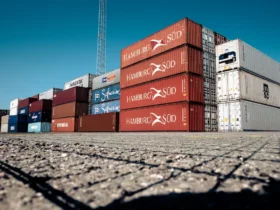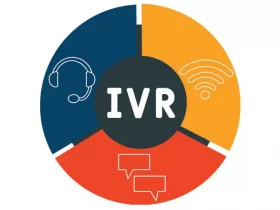Navigating the world of Amazon can be tricky for sellers, especially when it comes to understanding and adhering to the platform’s labeling requirements. Properly labeling products is essential not just for compliance, but also to ensure a smooth and efficient supply chain. In this article, we’ll explore the key aspects of Amazon’s labeling requirements, with a focus on barcodes, packaging guidelines, and Fulfilled By Amazon (FBA) specifics.
Understanding Amazon’s barcode system is crucial for sellers, as it serves as a unique identifier for each product. Failing to label products correctly can lead to delays, additional costs, and even suspension of selling privileges. Additionally, we’ll discuss the packaging and labeling guidelines to ensure that your products not only comply with Amazon’s requirements but also reach customers in the best possible condition.
Key Takeaways
- Proper labeling is essential for maintaining a smooth supply chain and avoiding penalties on Amazon.
- Understanding Amazon’s barcode system and labeling requirements can prevent delays and additional costs.
- Following packaging guidelines keeps products in the best condition and in line with Amazon’s policies.
Understanding Amazon Barcodes
When selling products on Amazon, it’s essential to understand and comply with their barcode requirements. These barcodes play a crucial role in product identification, inventory management, and sales tracking. This section will cover four main types of barcodes used internationally: UPC, EAN, JAN, and ISBN.
UPC
UPC (Universal Product Code) is the most common barcode format in the United States and Canada. It uses a 12-digit numeric code in two groups of six digits, which is generated according to the GS1 standards. Each barcode is unique, and the first six digits indicate the company prefix.
If you’re selling a product in the US or Canada, it’s essential to obtain a valid UPC for your product. Please note that purchasing UPCs from third-party sources is not recommended by Amazon, as it might lead to issues with listing your products.
EAN
EAN (European Article Number) is a 13-digit barcode system predominantly used in Europe, and it’s similar to the UPC. The EAN follows GS1 standards and features a 13-digit number, with the first two to three digits representing the country code.
As a seller on Amazon, you must have an EAN if you plan to sell your products in Europe and other countries that use this barcode format.
JAN
JAN (Japanese Article Number) is another barcode system that follows the GS1 standard. It’s a 13-digit barcode format specifically designed for products sold in Japan. The first two digits (45 or 49) indicate that the product is from Japan.
For Amazon sellers who intend to sell their products in Japan, a JAN is required to list and identify products correctly.
ISBN
ISBN (International Standard Book Number) is a unique numeric identifier for books, audiobooks, and other book-related products. The ISBN is a 13-digit code, and its format has been standardized by the International ISBN Agency.
Authors and publishers selling on Amazon must ensure that their books have a valid ISBN, which is crucial for managing inventory and sales tracking in the platform.
By ensuring your product has the right barcode type (UPC, EAN, JAN, or ISBN), you are adhering to Amazon’s labeling requirements and simplifying the listing and inventory management process.
Amazon Labeling Requirements
When selling products on Amazon using Fulfillment by Amazon (FBA), it is essential to understand and comply with Amazon’s labeling requirements. Proper labeling ensures efficient inventory management, accurate order fulfillment, and a positive customer experience.
ASIN
An Amazon Standard Identification Number (ASIN) is a unique identifier assigned by Amazon to all products listed on its marketplace. Each ASIN is a unique 10-character code that identifies a specific product, making it easy to track and manage. Sellers need to ensure that their products have the correct ASINs to prevent mislabeled items and potential errors in the fulfillment process.
SKU
A Stock Keeping Unit (SKU) is a unique code sellers create and assign to each product they sell on Amazon. SKUs are crucial for inventory management and tracking product performance. Each SKU should be scannable, enabling Amazon fulfillment centers to quickly process items as they are received. Amazon recommends using a combination of letters and numbers for SKUs, and they should be printed clearly on product labels or barcode labels.
| Important SKU Considerations | |
|---|---|
| Code Format | Combination of letters and numbers |
| Scannable | Yes |
| Location | Printed on product labels or barcode labels |
FNSKU
An FBA seller must provide an Amazon Fulfillment Network Stock Keeping Unit (FNSKU) barcode label for each product they send to Amazon fulfillment centers. The FNSKU is a unique identifier for each item in the FBA inventory and links the product to the seller’s account.
Amazon requires FNSKU labels to be scannable and clearly printed on either the product label or the manufacturer barcodes. Case packs should be labeled with FNSKU barcodes to ensure efficient handling and tracking within the fulfillment center.
Here are some key points to remember when labeling with FNSKUs:
- Ensure labels are scannable and clearly printed
- Place FNSKU label over existing manufacturer barcodes
- Label each item in a case pack with its FNSKU barcode
By meeting Amazon’s labeling requirements for ASIN, SKU, and FNSKU, sellers can efficiently manage their inventory, streamline the fulfillment process, and provide a positive experience for customers on the Amazon marketplace.
Packaging and Labeling Guidelines
Product Packaging
To ensure efficiency and customer satisfaction, it is essential that all products sold on Amazon meet specific packaging standards. The goals of these packaging requirements are to maximize transparency, minimize counterfeit, and provide smooth handling in fulfillment centers.
General Packaging Guidelines:
- Packaging must be durable enough to protect the product during transit.
- Transparent polybags must be used whenever applicable to help promote transparency and counteract counterfeit products.
- Polybags with a minimum of 1.5 mil (38.1 microns) thickness are required.
- For children’s products, a suffocation warning on the packaging is mandatory.
- Products sold as a set must be clearly marked “Sold as set” on the packaging.
Label Placement Requirements
Proper labeling is critical for smooth handling and processing of the products in Amazon’s fulfillment centers. Labels need to be scannable and easy to read. Below are the label placement requirements for products sold on Amazon:
- Apply the label on a flat, non-reflective surface.
- Use laser printers and removable adhesive labels for printing; inkjet printers are discouraged.
- Labels must be printed in black ink on a white background.
- Do not place the label over a seam or closure, as this may affect scannability.
- Cover the original barcode with the Amazon barcode (FNSKU) to avoid any confusion during the scanning process.
Pallet Labels:
- Each Amazon pallet sent to the fulfillment center must have four pallet labels, one on each side.
- The carrier label must be visible and easily accessible.
Amazon Packaging Requirements
To ensure efficient handling in fulfillment centers, Amazon has specific packaging requirements for certain product categories. Some of these include:
- Polybags: Products that need polybags must have a transparent or see-through bag and display product name clearly.
- Bubble wrap: Products that require bubble wrap need a layer wrapped around the product without covering the scannable label.
- Boxed units: Make sure the unit is tightly sealed and consider placing labels on two sides of the box for easier scanning.
By following these packaging and labeling guidelines, you can help ensure that your products reach Amazon fulfillment centers and customers without any issues.
Amazon FBA Specific Requirements
FBA Labeling
Fulfillment by Amazon (FBA) requires specific labeling for products to ensure efficient processing in their fulfillment centers. Sellers must provide FBA labeling for each item, including the Amazon Standard Identification Number (ASIN) and item condition. Thermal printers are recommended for printing labels for better durability and readability.
FBA Box ID Label
Every box sent to an Amazon fulfillment center needs an FBA Box ID Label. This label facilitates tracking and inventory management. To create an FBA Box ID Label, you can use Seller Central. Make sure to follow the label dimensions and placement guidelines provided by Amazon.
Prep Materials
Proper prep materials are essential to protect items during shipping and storage. Some common prep materials include:
- Poly Bags: Used for various products, they must have a suffocation warning printed on them, visible to customers.
- Warning Labels: To provide clear instructions and cautions for specific items, warning labels must be attached to the product packaging.
Remember to always comply with Amazon’s FBA requirements to ensure a smooth experience for both suppliers and millions of customers.
Printing and Compliance
Thermal Printer
Thermal printers use heat to produce crisp, clear, and scannable FNSKU labels. These labels are required for Amazon FBA product barcode labels. A high-quality thermal printer can increase your label service efficiency, so your products are ready to ship in less time.
- Compliance: Thermal labels must comply with Amazon’s labeling requirements, including country of origin and carrier labels.
- Sold as a set: If you are selling items as a set, the FNSKU label should clearly identify the set.
- Scanning: Labels printed by a thermal printer are generally easy to scan because of their high-resolution printing capabilities.
Laser Printer
Laser printers also provide sharp and scannable FNSKU labels, which are essential for the labeling of your FBA products before they are ready to ship. Laser printers are more versatile compared to thermal printers, as they can also print country of origin and carrier labels.
- Compliance: Laser-printed labels are also subject to compliance with Amazon’s labeling requirements.
- Sold as a set: If you are selling items as a set, the FNSKU label should clearly identify the set.
- Scanning: High-quality laser printer labels offer excellent scanning capabilities, ensuring that your FBA products are identified and processed efficiently.
It’s crucial to invest in a reliable printer that can meet Amazon’s labeling requirements for your FBA products. Both thermal and laser printers can meet these requirements; however, it’s essential to choose a printer that best suits your needs and preferences.
Frequently Asked Questions
What are the necessary elements for Amazon product labels?
Each product label on Amazon must have the following elements:
- Product’s name
- Brand name
- An image of the product
- A product description
- Product’s dimensions and weight
- A unique product identifier, such as a UPC, EAN, or ISBN
- The Amazon Standard Identification Number (ASIN), which is assigned by Amazon
Additionally, if you are using Amazon FBA, you need to include the FNSKU on your label.
How do FNSKU label requirements differ from standard barcode requirements?
FNSKU (Fulfillment Network Stock Keeping Unit) labels are unique to Amazon FBA and differentiate your products from others in the Amazon warehouse. Standard barcodes, such as UPC, EAN, or ISBN, identify a product universally.
The main differences between FNSKU labels and standard barcodes are:
- FNSKU labels are exclusive to Amazon FBA and are assigned by Amazon, while standard barcodes are universal and assigned by GS1.
- FNSKU labels are printed directly on the product or packaging, while standard barcodes are usually printed on a removable label.
What are the packaging and prep requirements for Amazon FBA?
Amazon FBA has specific packaging and prep requirements to ensure products are protected during transportation and storage. These include:
- Using sturdy and secure packaging materials
- Sealing all boxed items with tape
- Ensuring products have proper cushioning
- Keeping liquid items in sealed, leak-proof containers
For more details on Amazon FBA packaging and prep requirements, visit the Amazon FBA Help Center.
How should products be labeled for Amazon FBA?
Products sent to Amazon FBA should have the FNSKU barcode printed on the product or its packaging. The label should be scannable and easily visible. You can print the FNSKU labels yourself or use Amazon’s FBA Label Service for a fee.
What does ‘no labeling required’ signify on Amazon?
If a product listing on Amazon has ‘no labeling required’, this means that the product does not need an additional FNSKU label for Amazon FBA. The product’s original barcode (such as the UPC) is sufficient for identification within the Amazon fulfillment center.
What are the fees associated with Amazon’s labeling services?
Amazon offers an FBA Label Service to help sellers print and apply FNSKU labels to their products. The fees for the FBA Label Service vary based on the size and weight of the item. To check the current fees, visit the Amazon Seller Central website and navigate to the FBA Label Service fee schedule.












